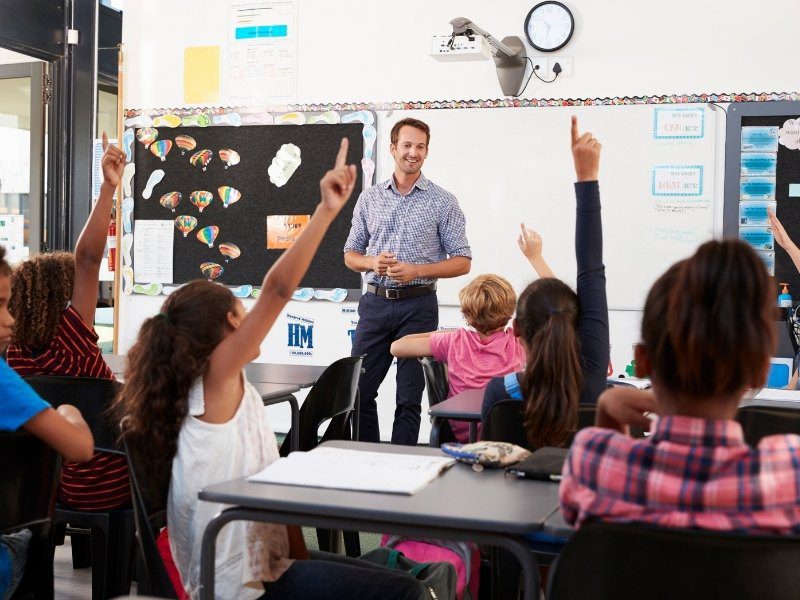Traditional education practice view the teachers as the source of information for students, as they bestow teaching onto their students. On the other hand, collaborative learning is a much more empowering teaching practice because rather than placing the educator above the students, the educator takes on the role of a knowledge curator, trusting that the students have the ability to successfully learn from themselves and each other.
Collaborative learning also prioritizes learning through group work and problem-solving; this usually involves students working together in groups or working with the instructor to advance in their learning.
In this article, we will outline the importance of collaborative learning, explore the best technologies to use to foster a collaborative learning environment, and highlight the benefits of collaborative learning.
The importance of collaborative learning
The shift to collaborative learning is a crucial step in replicating how people learn best. Outside of a traditional education format, individuals learn best through trial and error – testing different methods and seeing what works best.
In fact, it is through these errors that people can learn better and avoid making common mistakes in the future since they have more data on what does not work. Whereas if they succeed at a task the first time, they do not have the same data that failure provides, making them more likely to fail in the future.
When we look at the traditional classroom format, educators dictate to their students what works and what does not work, which only gives students one side of the coin that is learning. On the other hand, collaborative learning embraces failure and acknowledges it as a natural part of the learning process.
Furthermore, collaborative learning empowers students to believe in their ability to successfully learn and retain the concepts they obtain in the classroom. This creates more confident workers who are willing to take risks since their failure tolerance is higher than those who did not learn from an empowered process of trial and error.
Additionally, it teaches students how to effectively work in teams and problem-solve, which is a big part of most occupations. In fact, when students learn in groups, the weight of failure becomes much easier to manage since it is not being placed on any one individual. Rather, students are able to fail together and problem-solve together, which usually results in faster retention and turn-around rates.
The best technology for collaborative learning
Now that more educational institutions are switching to online learning, collaborative learning can be difficult to execute. This is when the methods and tools by which students are learning plays a crucial role in the success rate of this learning practice.
One of the best solutions to successfully execute a collaborative learning environment online is by finding the right software that includes important tools such as simple document-sharing, intuitive communication modalities, easy-to-follow discussion forums, and helpful AI that can foster better engagement and collaboration amongst students.
One of the most powerful platforms available to educational institutions to engage students, build community, and personalise the learning experience within collaborative learning is aleX. aleX is also built within the Microsoft Teams, which means institutions can experience an easier setup within a familiar environment.
What makes aleX particularly powerful is an analytics engine and AI learning assistant called QBot. They have helped many institutions:
- Automate responses to frequent questions by creating a centralized self-building knowledge base that leverages the questions from interactions with students to accelerate the acquisition of knowledge.
- Leverage analytics to provide educators with recommendations that address individual student needs
With aleX, students can thrive in a collaborative learning environment, online and in-class; aleX is intentionally built to help educators create learning communities.
How educators benefit from collaborative learning
As previously stated, collaborative learning takes the pressure off educators to be the sole provider of information to their students. Instead, they serve as facilitators for group learning that allows students to bounce off one another for support and progress.
Because the students have more freedom to learn in the way that best fits their needs as a group, educators can also collect valuable data on the modalities that work best for students, and share tested and proven strategies with their future students as they embark on the collaborative learning journey together.
Overall, collaborative learning creates a unique role for educators to observe and nudge students instead of imposing their beliefs and opinions. Rather, everyone’s opinions and input is seen as equally valuable, regardless of whether they are students, educators, or teaching assistants.
CONCLUSION
Collaborative learning creates a more expansive and empowering learning experience for students, which in turn creates better-prepared adults who can perform at a higher level in the workforce where trial and error is a major part of progress and growth.
Because of this, educational institutions should be prioritizing collaborative learning and use the best software available to create a seamless experience for their students and educators.
If you’re ready to deliver the best collaborative learning experience for your institution, our team looks forward to connecting with you about how aleX help you make a seamless transition.




